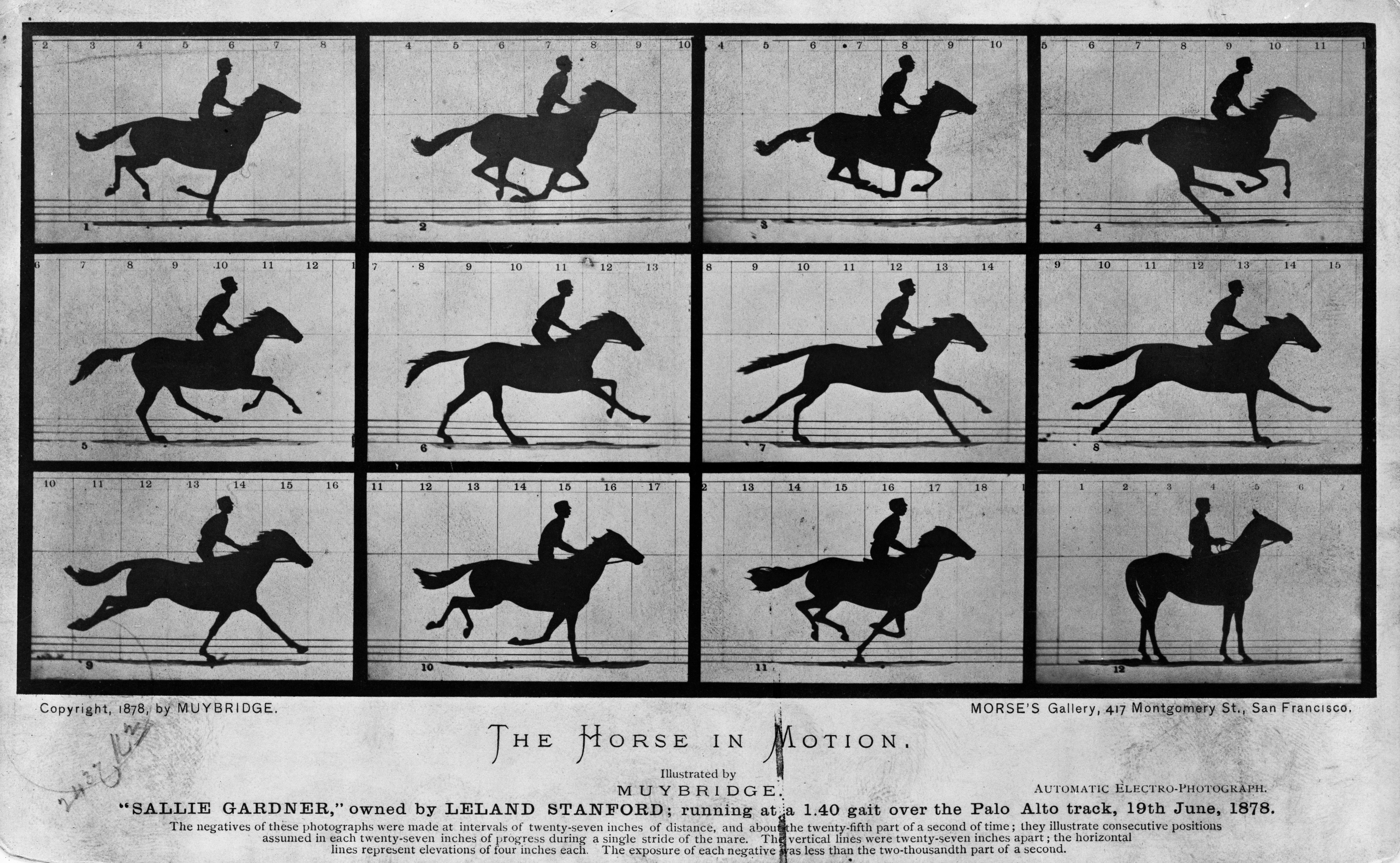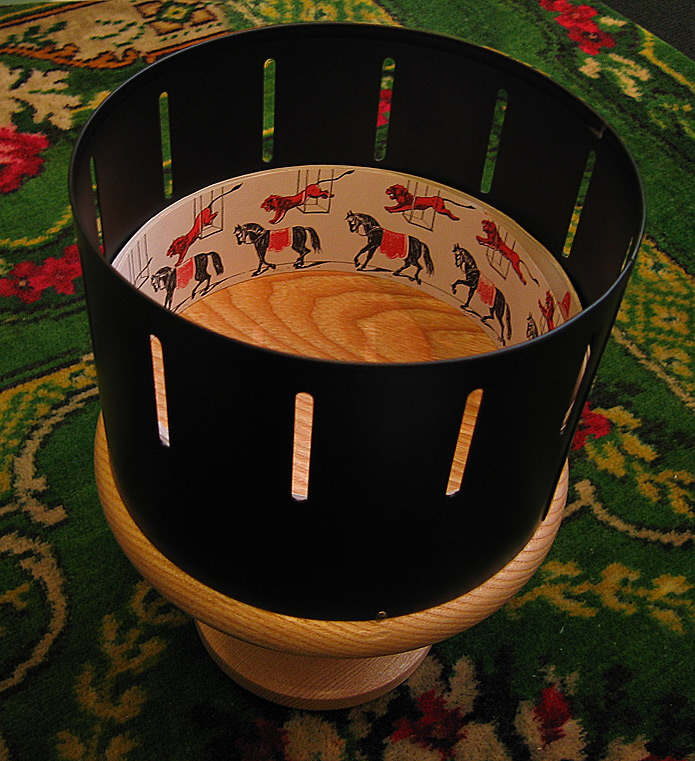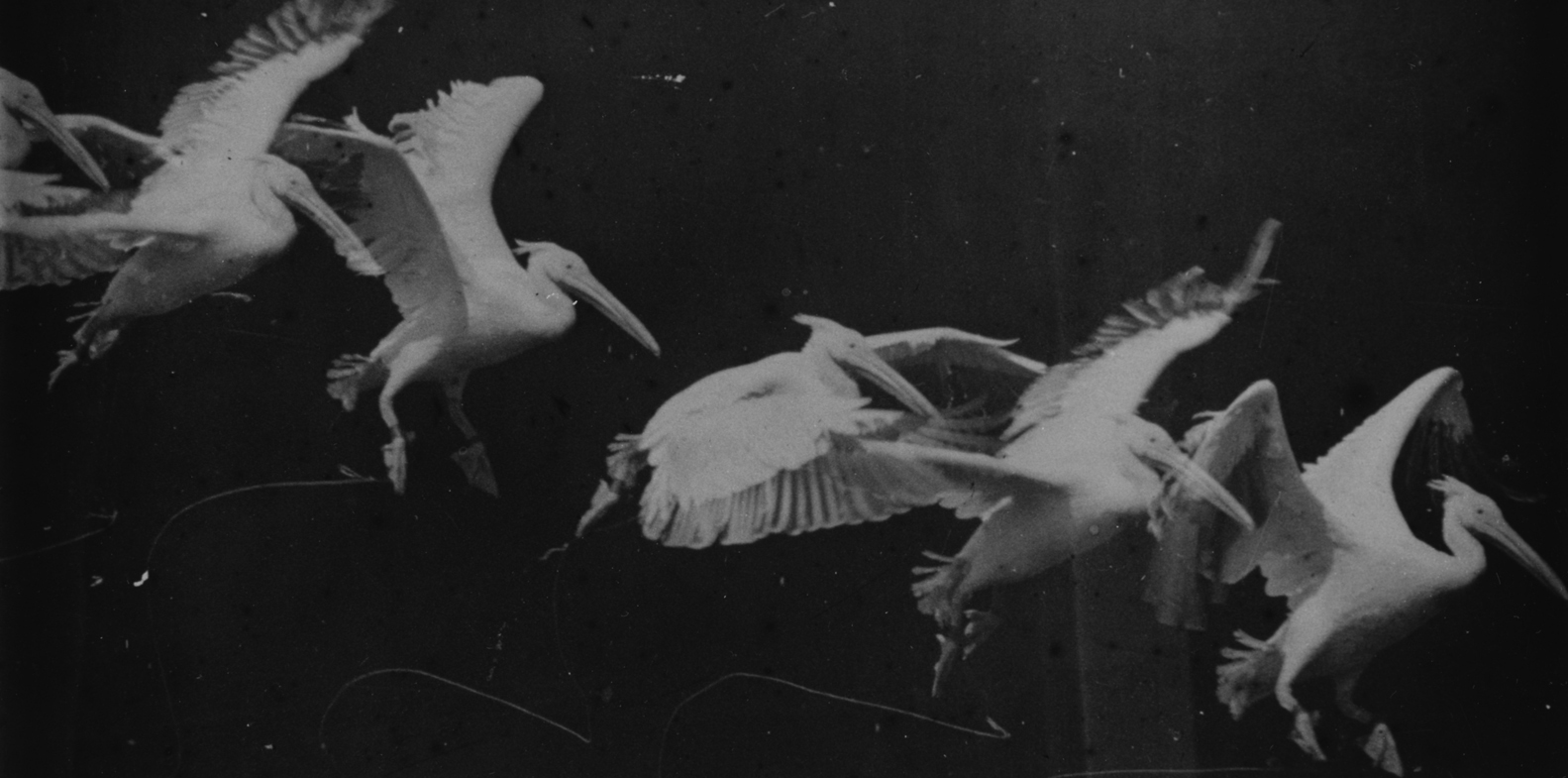|
Chronophotography
Chronophotography is a photographic technique from the Victorian era which captures a number of phases of movements. The best known chronophotography works were mostly intended for the scientific study of Animal locomotion, locomotion, to discover practical information for animal handlers and/or as reference material for artists. Although many results were not intended to be exhibited as moving pictures, there is much overlap with the more or less simultaneous quest to register and exhibit photographic motion pictures. Definition Chronophotography is defined as "a set of photographs of a moving object, taken for the purpose of recording and exhibiting successive phases of motion". The term ''chronophotography'' was coined by French physiologist Étienne-Jules Marey to describe photographs of movement from which measurements could be taken and motion could be studied. It is derived from the Greek word χρόνος ''chronos, chrónos'' ("time") combined with ''photography''.The ... [...More Info...] [...Related Items...] OR: [Wikipedia] [Google] [Baidu] [Amazon] |
Eadweard Muybridge
Eadweard Muybridge ( ; 9 April 1830 – 8 May 1904, born Edward James Muggeridge) was an English photographer known for his pioneering work in photographic studies of motion, and early work in motion-picture Movie projector, projection. He adopted the first name "Eadweard" as the original Germanic name, Anglo-Saxon form of "Edward", and the surname "Muybridge", believing it to be similarly archaic. A photographer in the 19th century American West, he photographed Yosemite National Park, Yosemite, San Francisco, the newly acquired Alaska, Alaskan Territory, subjects involved in the Modoc War, and lighthouses on the West Coast of the United States, West Coast. He also made his early moving picture studies in California. Born in Kingston upon Thames, Surrey, England, at the age of 20 he emigrated to the United States as a bookseller, first to New York City, then to San Francisco. In 1860, he planned a return trip to Europe, but suffered serious head injuries en route in a sta ... [...More Info...] [...Related Items...] OR: [Wikipedia] [Google] [Baidu] [Amazon] |
The Horse In Motion
''The Horse in Motion'' is a series of cabinet cards by Eadweard Muybridge, including six cards that each show a series of six to twelve "automatic electro-photographs" depicting successive phases in the movement of a horse, shot in June 1878. An additional card reprinted the single image of the horse "Occident" trotting at high speed, which had already been published in 1877. The series became the first example of chronophotography, an early method to photography, photographically record the passing of time, mainly used to document the different phases of locomotion for scientific study. It formed a very influential step in the development of Film, motion pictures. One of the cards (often retitled ''Sallie Gardner at a Gallop'') has even been hailed as "the world's first bit of cinema". Muybridge did project moving images from his photographs with his Zoopraxiscope, from 1880 to 1895, but these were painted on discs and his technology was no more advanced than earlier effor ... [...More Info...] [...Related Items...] OR: [Wikipedia] [Google] [Baidu] [Amazon] |
Motion Picture
A film, also known as a movie or motion picture, is a work of visual art that simulates experiences and otherwise communicates ideas, stories, perceptions, emotions, or atmosphere through the use of moving images that are generally, since the 1930s, synchronized with sound and (less commonly) other sensory stimulations. Etymology and alternative terms The name "film" originally referred to the thin layer of photochemical emulsion on the celluloid strip that used to be the actual medium for recording and displaying motion pictures. Many other terms exist for an individual motion-picture, including "picture", "picture show", "moving picture", "photoplay", and "flick". The most common term in the United States is "movie", while in Europe, "film" is preferred. Archaic terms include "animated pictures" and "animated photography". "Flick" is, in general a slang term, first recorded in 1926. It originates in the verb flicker, owing to the flickering appearance of early films. ... [...More Info...] [...Related Items...] OR: [Wikipedia] [Google] [Baidu] [Amazon] |
The Horse In Motion
''The Horse in Motion'' is a series of cabinet cards by Eadweard Muybridge, including six cards that each show a series of six to twelve "automatic electro-photographs" depicting successive phases in the movement of a horse, shot in June 1878. An additional card reprinted the single image of the horse "Occident" trotting at high speed, which had already been published in 1877. The series became the first example of chronophotography, an early method to photography, photographically record the passing of time, mainly used to document the different phases of locomotion for scientific study. It formed a very influential step in the development of Film, motion pictures. One of the cards (often retitled ''Sallie Gardner at a Gallop'') has even been hailed as "the world's first bit of cinema". Muybridge did project moving images from his photographs with his Zoopraxiscope, from 1880 to 1895, but these were painted on discs and his technology was no more advanced than earlier effor ... [...More Info...] [...Related Items...] OR: [Wikipedia] [Google] [Baidu] [Amazon] |
Stop Motion
Stop-motion (also known as stop frame animation) is an animated filmmaking and special effects technique in which objects are physically manipulated in small increments between individually photographed frames so that they will appear to exhibit independent motion or change when the series of frames is played back. Any kind of object can thus be animated, but puppets with movable joints (puppet animation) or clay figures (claymation) are most commonly used. Puppets, models or clay figures built around an armature are used in model animation. Stop motion with live actors is often referred to as pixilation. Stop motion of flat materials such as paper, fabrics or photographs is usually called cutout animation. Terminology The term "stop-motion", relating to the animation technique, is often spelled without a hyphen as "stop motion"—either standalone or as a compound modifier. Both orthographic variants, with and without the hyphen, are correct, but the hyphenated one is th ... [...More Info...] [...Related Items...] OR: [Wikipedia] [Google] [Baidu] [Amazon] |
Zoetrope
A zoetrope is a Precursors of film#Modern era, pre-film animation device that produces the illusion of motion, by displaying a sequence of drawings or photographs showing progressive phases of that motion. A zoetrope is a cylindrical variant of the phenakistiscope, phénakisticope, an apparatus suggested after the stroboscopic effect, stroboscopic discs were introduced in 1833. The definitive version of the zoetrope, with replaceable film picture film strips, was introduced as a toy by Milton Bradley Company, Milton Bradley in 1866 and became very successful. Etymology The name ''zoetrope'' was composed from the Greek root words ζωή ''zoe'', "life" and τρόπος ''tropos'', "turning" as a translation of "wheel of life". The term was coined by inventor William E. Lincoln, of Providence, Rhode Island. Technology The zoetrope consists of a cylinder with cuts vertically in the sides. On the inner surface of the cylinder is a band with images from a set of sequenced pictures. ... [...More Info...] [...Related Items...] OR: [Wikipedia] [Google] [Baidu] [Amazon] |
Étienne-Jules Marey
Étienne-Jules Marey (; 5 March 1830, Beaune, Côte-d'Or – 15 May 1904, Paris) was a French scientist, physiologist and chronophotographer. His work was significant in the development of cardiology, physical instrumentation, aviation, cinematography and the science of laboratory photography. He is widely considered to be a pioneer of photography and an influential pioneer of the history of cinema. He was also a pioneer in establishing a variety of graphical techniques for the display and interpretation of quantitative data from physiological measurement. Biography Marey started by studying blood circulation in the human body. Then he shifted to analyzing heart beats, respiration, muscles (myography), and movement of the body. To aid his studies he developed many instruments for precise measurements. For example, in 1859, in collaboration with the physiologist Auguste Chauveau and the watch manufacturer Breguet, he developed a wearable ''Sphygmograph'' to measure the puls ... [...More Info...] [...Related Items...] OR: [Wikipedia] [Google] [Baidu] [Amazon] |
Exposure (photography)
In photography, exposure is the amount of light per unit area reaching a frame (photography), frame of photographic film or the surface of an electronic image sensor. It is determined by shutter speed, lens f-number, and scene luminance. Exposure is measured in unit of measurement, units of lux-seconds (symbol lxs), and can be computed from exposure value (EV) and scene luminance in a specified region. An "exposure" is a single shutter cycle. For example, a long-exposure photography, long exposure refers to a single, long shutter cycle to gather enough dim light, whereas a multiple exposure involves a series of shutter cycles, effectively layering a series of photographs in one image. The accumulated ''photometric exposure'' (''H''v) is the same so long as the total exposure time is the same. Definitions Radiant exposure Radiant exposure of a ''surface'', denoted ''H''e ("e" for "energetic", to avoid confusion with Photometry (optics), photometric quantities) and measured in , i ... [...More Info...] [...Related Items...] OR: [Wikipedia] [Google] [Baidu] [Amazon] |
Leland Stanford
Amasa Leland Stanford (March 9, 1824June 21, 1893) was an American attorney, industrialist, philanthropist, and Republican Party (United States), Republican Party politician from Watervliet, New York. He served as the eighth governor of California from 1862 to 1863 and represented the state in the United States Senate from 1885 until his death in 1893. He and his wife Jane Stanford, Jane founded Stanford University, named after Leland Stanford Jr., their late son. Stanford became a successful merchant and wholesaler after migrating to California in 1852 during California gold rush, the gold rush; he built a commerce , business empire. He was an influential executive of the Central Pacific Railroad and later of the Southern Pacific Railroad, Southern Pacific railroads from 1861 to 1890; these positions gave him tremendous power in the Western United States which left a lasting impact on California. He also played a significant role as a shareholder and executive in the early ... [...More Info...] [...Related Items...] OR: [Wikipedia] [Google] [Baidu] [Amazon] |
Snapshot (photography)
A snapshot is a photograph that is "shot" spontaneously and quickly, most often without artistic or journalistic intent and usually made with a relatively cheap and compact camera. Common snapshot subjects include the events of everyday life, often portraying family members, friends, pets, children playing, birthday parties and other celebrations, sunsets, tourist attractions and the like. Snapshots can be technically "imperfect" or amateurish: poorly framed or composed, out of focus, and/or inappropriately lighted by flash. Automated settings in consumer cameras have helped to obtain a technologically balanced quality in snapshots. Use of such settings can reveal the lack of expert choices that would entail more control of the focus point and shallower depth of field to achieve more pleasing images by making the subject stand out against a blurred background. Snapshot photography can be considered the purest form of photography in providing images with the characteris ... [...More Info...] [...Related Items...] OR: [Wikipedia] [Google] [Baidu] [Amazon] |
Photographic Emulsion
Photographic emulsion is a light-sensitive colloid used in film-based photography. Most commonly, in silver-gelatin photography, it consists of silver halide crystals dispersed in gelatin. The emulsion is usually coated onto a substrate of glass, films (of cellulose nitrate, cellulose acetate or polyester), paper, or fabric. The substrate is often flexible and known as a film base. Photographic emulsion is not a true emulsion, but a suspension of solid particles (silver halide) in a fluid (gelatin in solution). However, the word ''emulsion'' is customarily used in a photographic context. Gelatin or gum arabic layers sensitized with dichromate used in the dichromated colloid processes carbon and gum bichromate are sometimes called ''emulsions''. Some processes do not have emulsions, such as platinum, cyanotype, salted paper, or kallitype. Components Photographic emulsion is a fine suspension of insoluble light-sensitive crystals in a colloid sol, usually consisting of g ... [...More Info...] [...Related Items...] OR: [Wikipedia] [Google] [Baidu] [Amazon] |
Jules Duboscq
Louis Jules Duboscq (March 5, 1817 – September 24, 1886) was a French instrument maker, inventor, and pioneering photographer. He was known in his time, and is remembered today, for the high quality of his optical instruments. Life and work Duboscq was born at Villaines-sous-Bois (Seine-et-Oise) in 1817. He was apprenticed in 1834 to Jean-Baptiste-François Soleil (1798–1878), a prominent instrument maker, and he married one of Soleil's daughters, Rosalie Jeanne Josephine, in 1839. Among the instruments Duboscq built were a stereoscope (marketing David Brewster's lenticular stereoscope), a colorimeter, a polarimeter, a heliostat A heliostat () is a device that reflects sunlight toward a target, turning to compensate for the Sun's apparent motion. The reflector is usually a plane mirror. The target may be a physical object, distant from the heliostat, or a direct ... and a saccharimeter. See also * Colorimetry (chemical method) References Fur ... [...More Info...] [...Related Items...] OR: [Wikipedia] [Google] [Baidu] [Amazon] |







